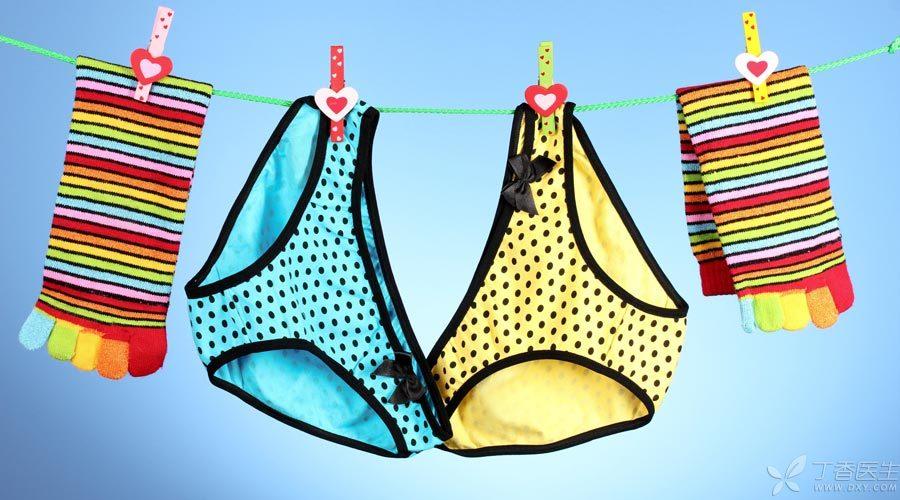
Most of the time I am not a good teacher, but a silent beautiful girl.
But sometimes you and I will encounter some occasions [not vomiting unhappily, vomiting is very strange]. For example, last month I went to the pharmacy to buy a box of Band-Aid, and heard two aunts discussing the problem of vaginitis. One of them said, “Blame my old ghost, how many years of beriberi have died, and throw socks in to wash with my underpants, how can I not have vaginitis?” ]
Ah, immediately my heart…
I don’t know my aunt. It’s really not good to start the class on the spot, but I’m really worried. I decided to write an article for you to see. If you love me deeply and forward it crazily, maybe my aunt will see it one day.
Tinea pedis and vaginitis are two completely different fungal infections
1. Tinea pedis
It is the most common superficial skin fungal infection, which can be manifested as heel cutin thickening, desquamation and small red papules, as well as peeling and exudation between toes, usually accompanied by a certain degree of pruritus.
The most common reason why it is so common is that it can be spread through sharing bath utensils, slippers and other channels. In families with mixed slippers, one person often gets sick and the whole family’s feet itch, which may also spread from the feet to toenails, hands, thighs and buttocks…
2. Mycotic vaginitis
This is one of the most common gynecological inflammation, which nearly 80% of women have at least once in their lives. Most of the time it is not caused by foreign pathogenic microorganisms, but by the imbalance of their own flora, one of which is caused by the sudden emergence of a strain.
It is often manifested as vulvovaginal pruritus, bean curd residue-like leucorrhea, and even urination pain and sexual intercourse pain.
Roughly speaking, both are fungal infections, so people who know little about them often think they are the same thing.
However, fungi are a large family and there are many members in it, okay? !
The main cause of tinea pedis is Trichophyton rubrum, and the main cause of mycotic vaginitis is Candida albicans. Is it completely different? !
Your distant relatives owe a lot of debts for gambling. Creditors say that you are all a family anyway. Are you happy? !
If tinea pedis infects the perineum, it causes another disease.
If Trichophyton rubrum is spread to (whether it is someone else’s or their own) buttocks, although it will not cause mycotic vaginitis, it can cause another skin disease, that is tinea cruris.
Tinea cruris often occurs at the root of the thigh. It is annular or semi-annular, slightly bulging on the skin, and the surface is often scaly and itchy to a certain extent. Gently scraping the dandruff to the dermatology department and observing it under the microscope, you can see the thallus or spores of Trichophyton rubrum, which is the same as tinea pedis, thus fully proving the relationship between them: it is caused by the same pathogen.
How does the red trichophyton on the foot run to the perineum?
In addition to touching other parts of the skin after stinging, bathtubs, towels and other bath utensils can also be spread, and textiles that have not been fully disinfected can also be contaminated. Therefore, the article begins with this kind of concern mentioned by Boyle, if it really happens, it will cause tinea cruris rather than vaginitis.
Will mixed washing of socks and underwear spread diseases?
Many people who have lived abroad will find it strange to mention that the mixed washing of socks and underpants will spread diseases.
In Europe and the United States, there are often self-service laundry. Rows of public washing machines in the laundry room, everyone comes with their clothes and stuffs all their clothes into them to wash when they see which one is empty, not to mention the inner and outer clothes. Even you and I don’t know, and they don’t see how much tinea they have.
Hum, pull it down. Since the university town opposite our hospital is equipped with coin-operated public washing machines, we don’t have too many young patients with tinea pedis and tinea cruris here.
Is it different in physique?
In fact, no matter white, yellow or black, there is no special antibody to Trichophyton rubrum.
The reason why some European and American countries can mix clothes but do not lead to the spread of diseases is mainly because disinfectants are often added to their washing powder and laundry detergent. However, in our country, the disinfection of clothes has not been popularized to this extent. Most washing powder and laundry detergent do not add additional disinfectants.
In some large supermarkets and e-commerce offices, You can buy separate clothing disinfectants. Most of these disinfectants contain m-diphenol or composite bleaching activator. It has certain inhibitory and even killing effects on common pathogenic bacteria in daily life, such as Staphylococcus aureus, Escherichia coli, Candida albicans causing mycotic vaginitis, Trichophyton rubrum causing tinea pedis and tinea cruris, etc., and can truly achieve the purpose of [disinfection].
Therefore, it is not absolutely impossible to mix and wash clothes, but it is only necessary to add additional clothes disinfectant.
In addition, when the washing temperature is higher than 60 ℃, the killing effect on pathogenic microorganisms is also significantly increased. Of course, the most important thing is to cure beriberi and cut off the root of hidden dangers.
As long as this is done, I support [stuffing everything except the living into the washing machine] with both hands to liberate the labor force.
